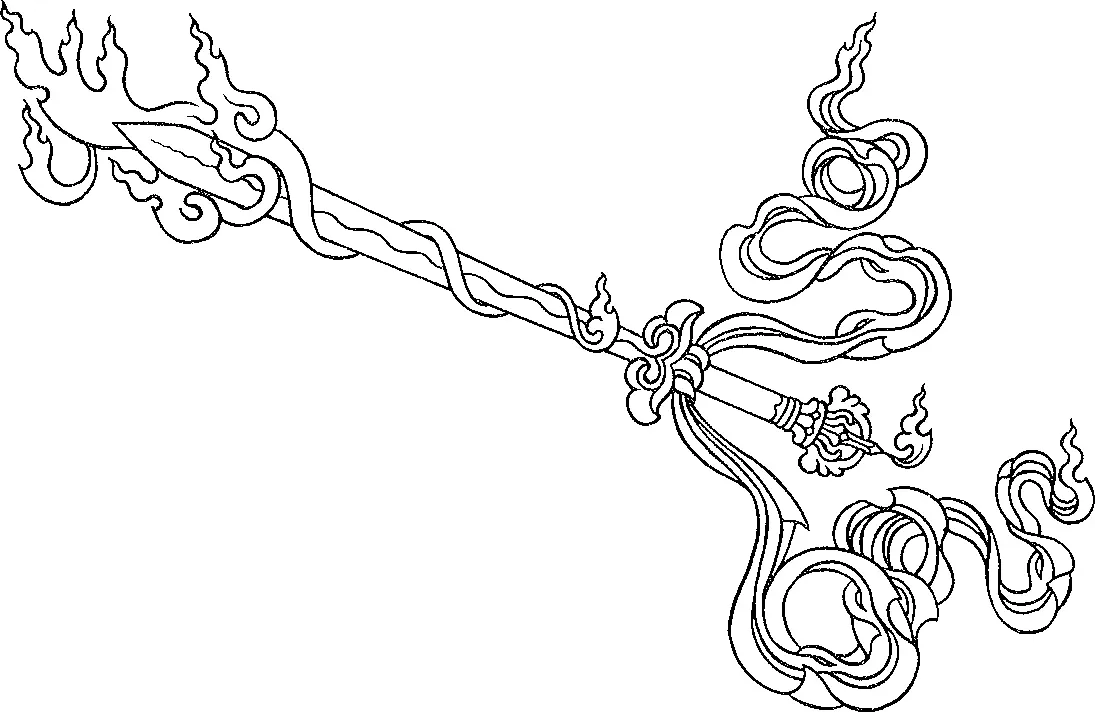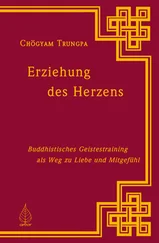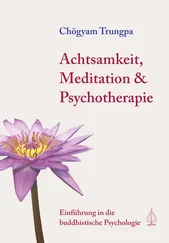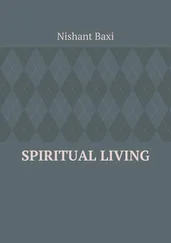If the thought of demons
Never rises in your mind,
You need not fear the demon hosts around you.
It is most important to tame your mind within ... 1
On the steep path of fear and hope
They lie in ambush ... 2
And later Milarepa himself says, “Insofar as the Ultimate, or the true nature of being is concerned, there are neither Buddhas nor demons. He who frees himself from fear and hope, evil and virtue, will realize the insubstantial and groundless nature of confusion. Samsara will then appear to be the Mahamudra itself ...” 3
The rest of The Hundred Thousand Songs deals with Milarepa’s development as a teacher and his relationships with his students. Toward the end of his life he had completely perfected the transmutation process to the point where he could be called the Vidyadhara or “Holder of the Crazy Wisdom.” No longer could he be swayed by the winds of hope and fear. The gods and goddesses and demons, his passions and their external projections, had been completely subjugated and transformed. Now his life was a continual dance with the dakinis.
Finally Milarepa reached the “old dog” stage, his highest attainment. People could tread on him, use him as a road, as earth; he would always be there. He transcended his own individual existence so that, as we read his last teachings, there is a sense of the universality of Milarepa, the example of enlightenment.

Abhidharma , ※
abhisheka , ※ ※ ※. See also initiation
Action, All-Accomplishing. See Wisdoms, Five
adhishthana , ※
aggression, ※ ※ ※ ※; expression of, ※ ※ ※ ※; Vajra and ※; in Hell Realm, ※ ※; in love, ※
alaya-vijnana , ※
ambition, ※ ※ ※ ※ ※ ※; in meditation, ※ ※ ※. See also struggle
Amitabha , color of, ※
anger. See aggression and vajra-anger
Animal Realm. See Realms, Six
arhats , ※ ※ ※
art, ※ ※; transmutation in, ※
“as it is”, ※ ※ ※ ※ ※; surrendering to, ※ ※ ※ ※; in Tantra, ※. See also reality and tathata
asceticism, ※ ※ ※. See also disciplines, spiritual and renunciation
Asura Loka , ※ ※. See also Realms, Six
atman, ※
atomism, ※
Avalokiteshvara , ※
avidya , ※. See also Skandhas, Five
awakened state, ※ ※; discovery of, ※ ※ ※ ※ ※ ※ ※; evaluation of, ※; expressions of, ※; and bodhisattva, ※. See also bodhi and enlightenment
Awareness, Discriminating. See Wisdoms, Five
awareness, panoramic, ※ ※ ※ ※; loss of, ※
basic ground, ※ ※ ※. See also “being as you are” and openness
“being as you are”, ※ ※ ※ ※. See also openness
“being here”, ※ ※ ※; difficulty of, ※ ※; as focus of meditation practice, ※; in therapy, ※. See also “as it is"
bhumi , ※. See also Bodhisattva Path
“big deal”, ※ ※ ※.
“blackout” ※ ※ ※ ※. See also ego, development of
bliss, ※ ※ ※ ※ ※; irrelevancy of, ※; search for, ※ ※. See also luminosity and virya
bodhi , ※ ※ ※. See also awakened state and Bodhisattva Path
bodhisattva, transcendental activities of, ※ ※ ※
Bodhisattva Path, ※ ※ ※; levels of, ※ ※ ※. See also Mahayana
Bodhisattva-charyavatara , ※
Brahman, ※
Buddha, Gautama (Shakyamuni), ※ ※ ※ ※ ※; and daughters of Mara, ※; and Four Noble Truths, ※ ※; and Heart Sutra , ※ ※; and shamatha , ※; and teachings, ※; and Three Lords of Materialism, ※
Buddha, three “bodies” of, ※. See also dharmakaya; nirmanakaya; and sainbhogakaya
Buddha Families, Five, ※
—Buddha, ※ ※
—Karma, ※ ※
—Padma, ※ ※
—Ratna, ※ ※ ※
—Vajra, ※ ※ ※
“Buddha activity”, ※ ※. See also karma
Buddha nature, ※ ※ ※. See also intelligence, basic and tathagata-garbha
Buddhahood, ※ ※ ※
Buddhism, approach to spirituality of, ※ ※; distinctions between Vehicles of, ※ ※ ※ ※ ※ ※ ※; Madhyamika school of, ※; Yogachara school of, ※ ※. See also Hinayana; Mahayana; Tantra; and Vajrayana
categories, grasping nature of, ※ ※ ※ ※ ※. See also concepts; conceptualization; ego, bureaucracy of; evaluation; form; and preconceptions
chakravartin , ※
chela, ※
Christ, ※ ※
Christian precepts, ※ ※
Christianity, ※ ※
citta-matra school. See Buddhism, yogachara school
clarity, of awakened state, ※; as generosity, ※; of prajna , ※; as shunyata , ※. See also precision
communication, allowing space for, ※ ※ ※ ※; compassion as, ※ ※ ※; generosity as, ※ ※; grasping nature of, ※; pain of, ※ ※; surrender as, ※
communication with energy of life, ※ ※ ※ ※; with spiritual friend, ※ ※ ※ ※. See also openness and surrender
communism, ※
compassion, ※ ※ ※; Bodhisattva of, ※; clarity of, ※; fearlessness of, ※ ※ ※ ※; ruthlessness of, ※ ※; warmth of, ※ ※ ※; directed by prajna , ※. See also generosity
Concept. See Skandhas, Five
concepts, self-protective nature of, ※ ※ ※ ※ ※; transcendence of, ※ ※ ※; in Madhyamika school, ※
conceptualization, absence of, ※ ※; avoiding, ※; cutting through, ※ ※ ※ ※; self-protective nature of, ※ ※ ※; of experience, ※; in Hinayana thought, ※. See also categories; evaluation; form; and preconceptions
confidence, ※ ※ ※ ※ ※
confusion, cutting through, ※ ※ ※ ※ ※ ※ ※; reality of, ※ ※; as sense of self, ※ ※ ※ ※. See also ego
consciousness, states of. See ego; enlightenment; Paramitas, Six; Realms, Six; self-consciousness; and Skandhas, Five
dakini , ※ ※
Damema, ※
dana , ※. See also Paramitas, Six
death, ※ ※ ※ ※; awareness of, ※
defense mechanisms. See ego, self-preservative quality of and security
demons, ※ ※
depression, ※. See also despair and disappointment
desire, impulse of, ※ ※ ※; path of, ※ ※ ※ ※; transmutation of, ※. See also samsara
despair, ※ ※ ※
Deva Loka , ※ ※. See also Realms, Six
dharma, ※ ※ ※ ※ ※ ※ ※ ※. See also meditation and Truths, Four Noble
dharma , living quality of, ※; misconception of, ※; personal expression of, ※; styles of presenting, ※; as absence of aggression, ※; as law of existence, ※; as transmutation of ego, ※. See also meditation and Truths, Four Noble
Dharma, Wheel of, ※ ※ ※. See also Truths, Four Noble
dharma body, ※. See also dharmakaya
dharmakaya , ※ ※. See also Buddha, three “bodies” of
dhyana , ※ ※ ※. See also meditation and Paramitas, Six
Читать дальше












